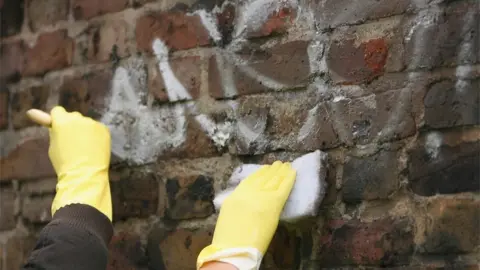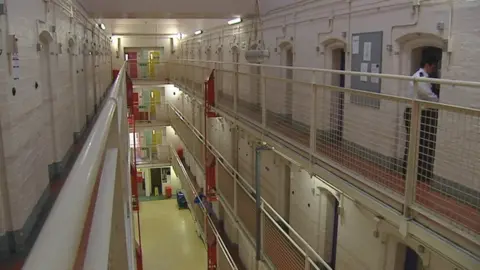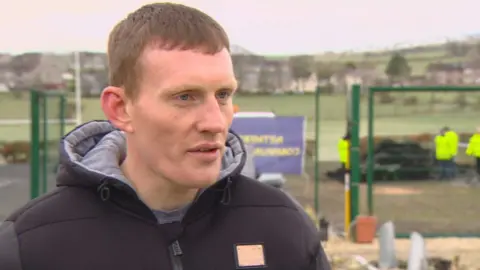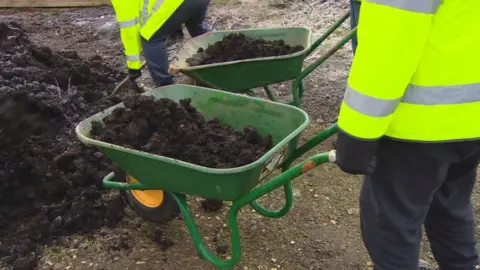How are Scotland's courts dealing with offenders?
 Getty Images
Getty ImagesNew figures which show how many people have appeared in Scotland's criminal courts over the last year, and what happened to them, have been published by the Scottish government.
What do the statistics show?
The number of people facing criminal charges in Scottish courts has continued to fall, as has the number being found guilty. This has been the trend for the last 10 years.
Proceedings were taken against a total of 95,254 people in 2017/18, a fall of 11% on 2016/17, while the number of convictions fell by 10% from 92,347 to 82,716.
There has been a 10% drop in the number of community sentences handed out last year, from 18,646 in 2016/17 to 16,830 in 2017/18.
These include community payback orders, restriction of liberty orders or drug treatment and testing orders. The numbers had been on the rise since 2010/11.
The figures also showed that more than a quarter of the 12,000 people who received prison sentences were jailed for less than three months. Almost 80% of those jailed received sentences of less than 12 months.

Analysis
By Reevel Alderson, BBC Scotland home affairs correspondent

Despite falling crime rates over more than two decades, Scotland's prison population, at just under 8,000, is at near record levels.
It is one reason why the Scottish government has wanted for a number of years to reduce the number of people receiving short prison sentences.
In 2011 it legislated for there to be a "presumption" against jail terms of three months or less. It cannot bind judges' hands by banning them.
It argues this would free up jail space for those who deserve - in the words of former Justice Secretary Kenny McAskill - "serious time".
But criminal justice experts say short sentences mean no meaningful work can be done to address offending behaviour - and can actually further damage the chances of prisoners going straight when they are released.
The alternative is non-custodial sentences, in particular Community Payback Orders (CPOs) - where offenders do unpaid work in the area where they committed their crime.
But the number of these imposed has been going down, which must concern ministers as they seek later this year to extend the presumption against short sentences to those of less than a year.
The latest figures show almost 80% of all jail terms imposed in 2017/18 were for less than 12 months.

'It's got a good structure and routine'

James Younger has spent a total of 600 hours on community payback orders.
He is now training to be a mentor who helps others understand the value of unpaid work schemes.
"I feel as if I had a lightbulb moment," he said. "So my outlook is now completely different.
"I am on a development worker programme which will help me share my life experience with other boys and help them to move on and do the right thing in theirs."

James said community pay back orders are not a "soft-option".
"You are still doing a hands-on, labouring job for no pay, but it's got good structure, it gives the boys routine, it gives them an idea of work."
He believes short prison sentences can often be "more of a time-waster".
"You are only in there wasting time," he said. "But you are coming out the same boy, there's no rehab.
"There's nothing in place for such a short sentence. There's no groups or programmes in the prison that you can do within three months or six months."
What other figures are in the report?
The number of convictions for rape and attempted rape have nearly trebled since 2010/11, from 36 to a total of 107.
Convictions for non-sexual crimes of violence increased by 5% between 2016/17 and 2017/18, to a total of 1,812.
The number of convictions for homicide increased by 13 to 90 over the same period.
Attempted murder and serious assault convictions increased by 5% to 1,168, with convictions for robbery increasing by 9% to 404 - the highest since 2013/14.
Other convictions for non-sexual crimes of violence fell by 7% to 150, which was the lowest in the last 10 years.
Convictions for crimes of dishonesty dropped by 9% in 2017/18 to 9,801, continuing the decline of the last 10 years.
